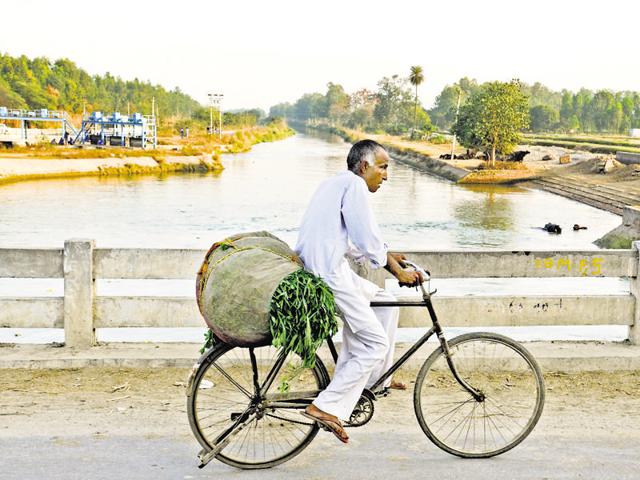Why taps ran dry for ten days in Gurgaon
An uneasy calm prevails at Kakroi in Sonepat that supplies water to Gurgaon, and parts of Delhi and Haryana.
An uneasy calm prevails at Kakroi in Sonepat that supplies water to Gurgaon, and parts of Delhi and Haryana.

More than a hundred personnel of the Rapid Action Force (RAF), a specialised wing of the Central Reserve Police Force (CRPF), are stationed at the micro hydel plant, 90km from Gurgaon, to ensure that Jats, demanding reservation, do not disrupt water supply again.
On February 21, Jats of Haryana took control of the Munak canal in Karnal and Khubru water head in Panipat that channel water from the Western Yamuna Canal to Kakroi.
Udaybir Singh, an RAF personnel, said his men reached Kakroi on February 23 and were well-equipped to tackle any attempt to tamper with Haryana’s water supply network.
Water from Kakroi is pumped into three canals – the Gurgaon Water Supply (GWS) and NCR, which supply water to Gurgaon, and the Carrier Lined Canal (CLC) that caters to Delhi.

It was when the agitators left escape gates of the pumping station at Munda Khera in Jhajjar open for a day that water supply to Gurgaon was hit for 10 days. Two hundred cusecs of water, equal to two days’ supply, was wasted and Gurgaon’s sole water carriers — NCR and GWS channels – ran dry.
The Jat stir hit water supply to Delhi too. Agitators damaged the CLC, officials said.
Irrigation officials said they bore the brunt of the crisis when it was the Jats who were responsible. The officials also blamed the Haryana Urban Development Authority (Huda) for not maintaining a buffer stock of at least seven days.
“Around 200 cusecs of water was wasted when escape gates at Munda Khera were opened on February 21 for 24 hours. The agitators shut the gates at the Khubru water head and water could not enter the canals,” Samundar Singh, sub-divisional officer of the NCR water channel, said.

The 75-km-long and 12-ft-deep NCR channel is designed to carry 130-170 cusecs, but silt and weed reduced its capacity to 200. Singh argued that despite poor maintenance, the supply to Gurgaon was “normal” before the Jat stir. The protestors tampered with the water supply system, he said.
The NCR channel, which runs parallel to the GWS channel, ends at the Chandu water treatment plant. The plant supplies water to sectors 51, 52, 53, 54, 55, 56 and 57, DLF and Sushant Lok.
Senior officials of the Haryana government said despite opening the sluices of the Khubru water head on February 23, there was no supply to Gurgaon for the next three days. Delay in cleaning the channel, particularly a 10-km section between Rohad and Manduthi, might have caused the shortage, they said.
Additional chief secretary of irrigation, Ram Nivas, who checked the canal after reports of acute shortage in Gurgaon, suspended the department’s superintending engineer.
The move came after the Gurgaon administration complained to the brass in Chandigarh. Huda administrator Hardeep Singh said the authority wrote many letters to the irrigation department and also tired to clean the end of the canal.

Samundar said the irrigation department sent two machines on February 25 to clean the NCR channel at Rohad and Manduthi. Silt and weed at the two locations reduced the velocity of water, he said.
When an HT team visited Rohad, it found one of the machines cleaning the channel. But, it could clean 30-35 metres an hour, which means the department would need a month to cover the entire channel. The channel is comparatively cleaner from Rohad to Jassor Kheri and towards Kakroi.
Stay updated with all the Breaking News and Latest News from Mumbai. Click here for comprehensive coverage of top Cities including Bengaluru, Delhi, Hyderabad, and more across India along with Stay informed on the latest happenings in World News.
Stay updated with all the Breaking News and Latest News from Mumbai. Click here for comprehensive coverage of top Cities including Bengaluru, Delhi, Hyderabad, and more across India along with Stay informed on the latest happenings in World News.





